
- by Dr.Thilo Senst
A Closer Look at Dog Cataracts: Key Symptoms & Management
- by Dr.Thilo Senst
This site uses cookies for better user experience and analytics.

If dogs ruled the world—which, let’s be honest, they practically do—dog cataracts would probably be as talked about as politics, the weather, or that last packet of crisps you pretended never existed. While dogs are superb at sniffing out trouble, ironically, their own eyes can give out on them at any point, making life that bit more confusing, both for them and for us frazzled owners.
Now, you might be wondering: What in the name of tennis balls are dog cataracts, and why does my beloved dog suddenly look like it’s peering through frosted glass? You’ve come to the right place! This comedic extravaganza of an article will take you on a whirlwind tour of canine eye health, specifically focusing on those pesky lens opacities known as dog cataracts. Expect laughs, real UK-based stats, a couple of bonkers analogies, plus tips, benefits, and an FAQ that’ll make your dog wag its tail in gratitude—well, theoretically.
So buckle up (or, in your dog’s case, buckle that harness) because we’re about to explore the fascinating, occasionally foggy realm of dog cataracts. By the end, you’ll be armed with enough knowledge to keep your canine’s eyes as clear as day. And, because we’re going for comedic gold, we’ll ensure you have a good giggle along the way.
You might think that cloudy eyes in dogs is just a “sign of ageing,” something you can brush off with a dismissive wave of the hand (or paw). But dog cataracts can do more than just blur your pup’s vision. They can hamper daily activities, make them bump into furniture (or the cat, leading to comedic household drama), and potentially cause discomfort if left unmanaged.
A cataract is essentially a clouding of the lens in your dog’s eye. When that lens goes from clear to looking like frosted glass, light can’t pass through as effectively. The result? Hazy vision, potential blindness if it goes unchecked, and a general sense of frustration in your dog’s day-to-day escapades—like missing the treat you threw at them from two feet away (oh, the disappointment in their eyes!).
If you’re keen on ensuring your dog doesn’t spend its golden years stumbling about like it’s had one too many pub pints, recognising and dealing with dog cataracts is crucial.
Because we Brits love a good statistic, let’s see what some reputable sources say about canine vision issues:
PDSA (People’s Dispensary for Sick Animals)
RSPCA
These figures tell us one thing: dog cataracts aren’t just an “old dog” problem, nor are they something to ignore. The condition can strike a variety of breeds and ages, so we need to be on our toes (or paws) to catch it early. Otherwise, we risk letting that slight eye cloudiness morph into a major vision meltdown.
Picture your dog’s eye lens as a grand concert stage. The lights are shining (representing the light entering the lens), and your dog’s retina is the audience eager to soak up every detail. Suddenly, a rogue fog machine (the cataract) cranks up to max. Fog engulfs the stage, blocking the performance from view. Your dog’s retina is left thinking, “Excuse me, I can’t see a single spotlight here, dear organiser. Mind clearing up the view?”
That’s dog cataracts in comedic form: a haze that stops your dog from seeing life’s daily show in full clarity. Sure, a little bit of stage fog can add atmosphere at a concert, but nobody wants to watch an entire gig in a thick pea-souper. The same principle applies to your pup’s eyes—clearing up that lens haze can be a real game-changer for their comfort and daily life.
So how do you know if your dog’s eyes are going from “sharp as a hawk” to “foggy as a winter morn in Manchester”? Watch out for:
Keep an eye (pun intended) on these signs. A quick vet consultation can confirm if it’s dog cataracts or something else, like nuclear sclerosis—a harmless, age-related lens change that can cause mild cloudiness but not significant vision loss.
To break it down:
Treating dog cataracts depends on the stage, cause, and how it affects your dog’s daily life. Some dogs can cope well with incomplete cataracts, while others might struggle if the changes are sudden or severe.
Think of your dog’s lens as a spotless glass window, giving you a pristine view outside. Now, imagine hosting a chaotic dinner party where everyone flings mashed potatoes and gravy at said window. Before long, lumps of food coat the glass, and the view is but a distant memory. That’s the comedic essence of a mature cataract: lumps of cloudiness that block what was once a clear window. If left as is, your dog’s world view will remain blurred by metaphorical gravy (eww).
Why fuss over your dog’s eyes? Because:
So, your dog’s lens is going a bit cloudy? Time to jump into action:
Q1: My dog’s eyes look cloudy, but he doesn’t seem bothered. Should I just leave it?
A1: Don’t ignore any persistent cloudiness—some conditions mimic cataracts but could be more benign (like nuclear sclerosis). However, only a vet can confirm. Early diagnosis means better management options.
Q2: Are dog cataracts purely age-related?
A2: Not necessarily. While ageing is a common factor, dog cataracts can stem from diabetes, genetics, injuries, or infections. Some unlucky pups are simply born predisposed to them.
Q3: Can I use human eye drops for my dog?
A3: Generally, no. Many human eye drops contain substances toxic to dogs or too strong for their eyes. Always seek vet-approved solutions.
Q4: Is surgery always needed for dog cataracts?
A4: No, not always. Mild cataracts may remain stable for years without major impact. Surgery becomes more relevant if the cataracts are progressing or if your dog’s vision and quality of life are compromised.
Q5: Do all dogs with diabetes get cataracts?
A5: A significant percentage do. Diabetes can rapidly accelerate cataract formation, so controlling blood sugar is essential. Regular vet check-ups are your best line of defence.
Q6: Can a dog go blind from untreated cataracts?
A6: Yes, especially if the cataracts become advanced and lead to secondary complications. That’s why timely intervention is crucial.
If you’ve ever watched your dog fail to catch a biscuit you tossed from a mere foot away, you know the heartbreak is real. But don’t despair! Dogs are adaptable creatures with super-sniffing powers that can compensate for a fair bit of vision loss. As an owner, your job is to be extra patient, keep your home environment safe, and perhaps ramp up those nose-based puzzle games to keep them mentally sharp.
Much like we adapt to wearing reading glasses or contact lenses, dogs adapt to minor vision changes, leaning on their other senses. A bit of comedic trial and error might occur (like Fido sniffing your leg instead of the lamp post he almost walked into), but with proper care, your dog can enjoy a fulfilling life—even with dog cataracts.
From spotting the initial haze to deciding whether or not your dog needs surgery, managing dog cataracts can be as comedic or dramatic as you make it. The key is staying informed, leaning on expert veterinary advice, and embracing the occasional weird moment—like your dog trying to “fetch” the newel post at the bottom of the stairs. With early detection, lifestyle adjustments, and possibly some medical intervention, your dog can carry on being the charming rascal it’s always been, minus the constant ocular confusion.
Whether your dog’s eyes are as clear as a summer sky or currently sporting a frosted-lens vibe, a bit of comedic relief and timely action can ensure your pup’s life remains bright and—most importantly—seen. Because a dog’s world is too exciting to be reduced to a blurry haze of shapes and shadows.
As we conclude this comedic (yet hopefully enlightening) journey into dog cataracts, it’s worth noting that while no supplement or spray is a magic wand for curing established cataracts, certain products can help support your dog’s overall well-being—especially when eye issues are involved. With that in mind, allow me, Dr. Thilo Senst, to suggest some of the best items from the Dr. Senst Pets range, perfect for complementing your dog’s eye care journey:
Dr. Senst Dog Calming Treats - Coping with limited vision can stress some dogs. These calming treats can help soothe anxiety, allowing your pup to navigate the house more confidently without resorting to frantic barking or midnight existential crises.
Dr. Senst Dog Calming Hemp Oil for Dogs - If your dog’s feeling especially anxious due to partial vision loss from dog cataracts, a gentle, vet-approved hemp oil may keep those jitters at bay. Think of it as a relaxing herbal tea for your four-legged friend.
Dr. Senst Antiseptic Dog Eye Drops - While these drops won’t “cure” dog cataracts, they can help keep minor irritations and bacterial issues at arm’s length—essential if your dog’s eyes need extra gentle care to prevent further complications.
Pick whichever product(s) resonate with your dog’s unique needs. Because every dog is different, always consult your vet to confirm the best approach for your pup’s specific health scenario. But with the right comedic attitude, timely vet checks, and some supportive care, you’ll help your dog see the world in all its brilliant, tail-wagging glory (or at least a close approximation of it).
So go forth, dear dog lover: Keep an eye on those eyes, maintain your sense of humour, and never underestimate the power of a well-timed treat. Life’s too short to let dog cataracts dim the sparkle in your pup’s gaze—give them every chance to keep those bright eyes shining, even if they need a little help along the way.
![]()
Enter your details & download our comprehensive 50+ page printable Dr. Senst Pet Care Planner completley FREE! - keep track of all your pet’s needs, from medical history and training to vet visits, grooming, diet, and more!

🇬🇧 NOW AVAILABLE IN THE UK 🇬🇧
Our products start from as little as 2p per dose, making it easy to support your pets health without overspending. From general wellness to specific health needs, we have the perfect solution for every pet.

















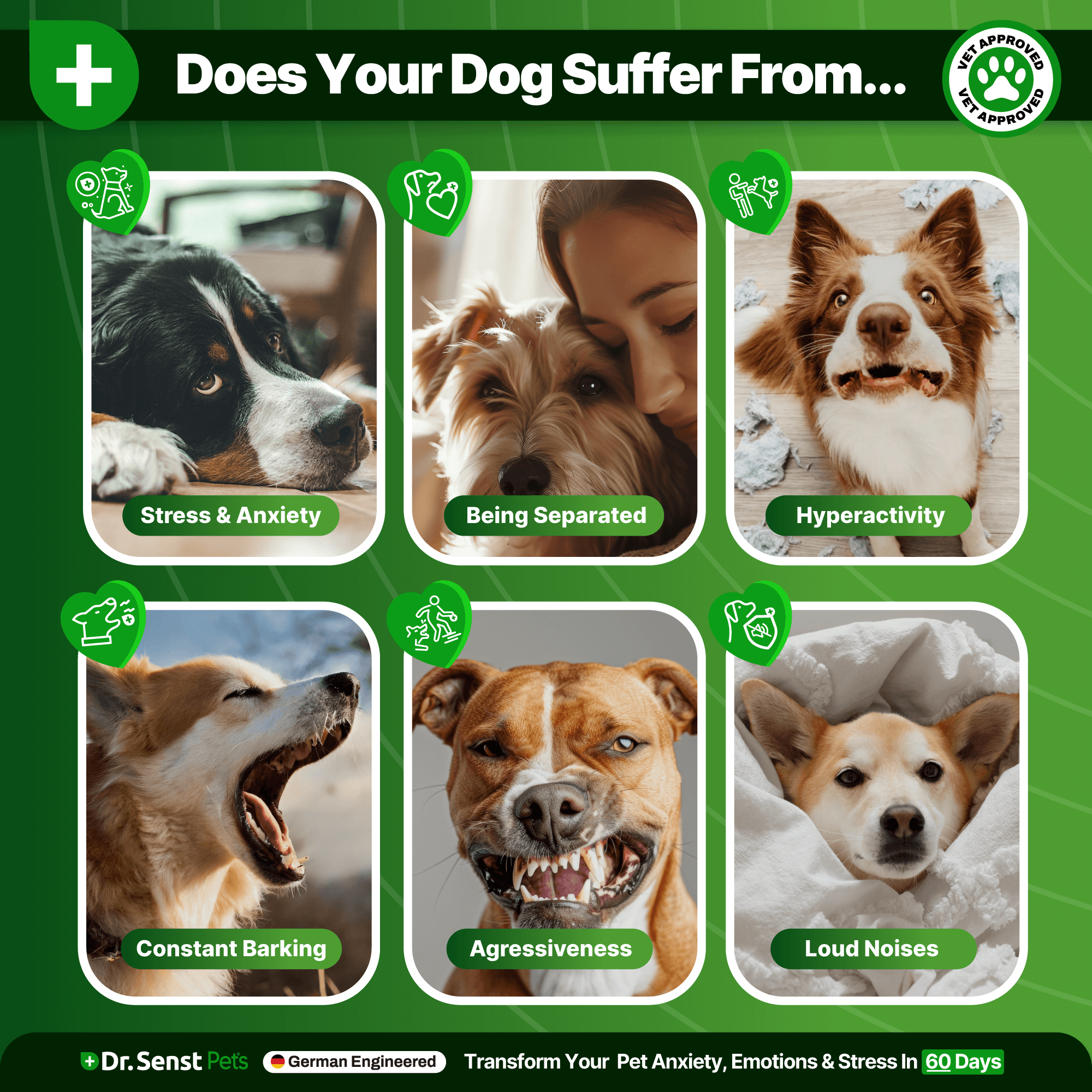
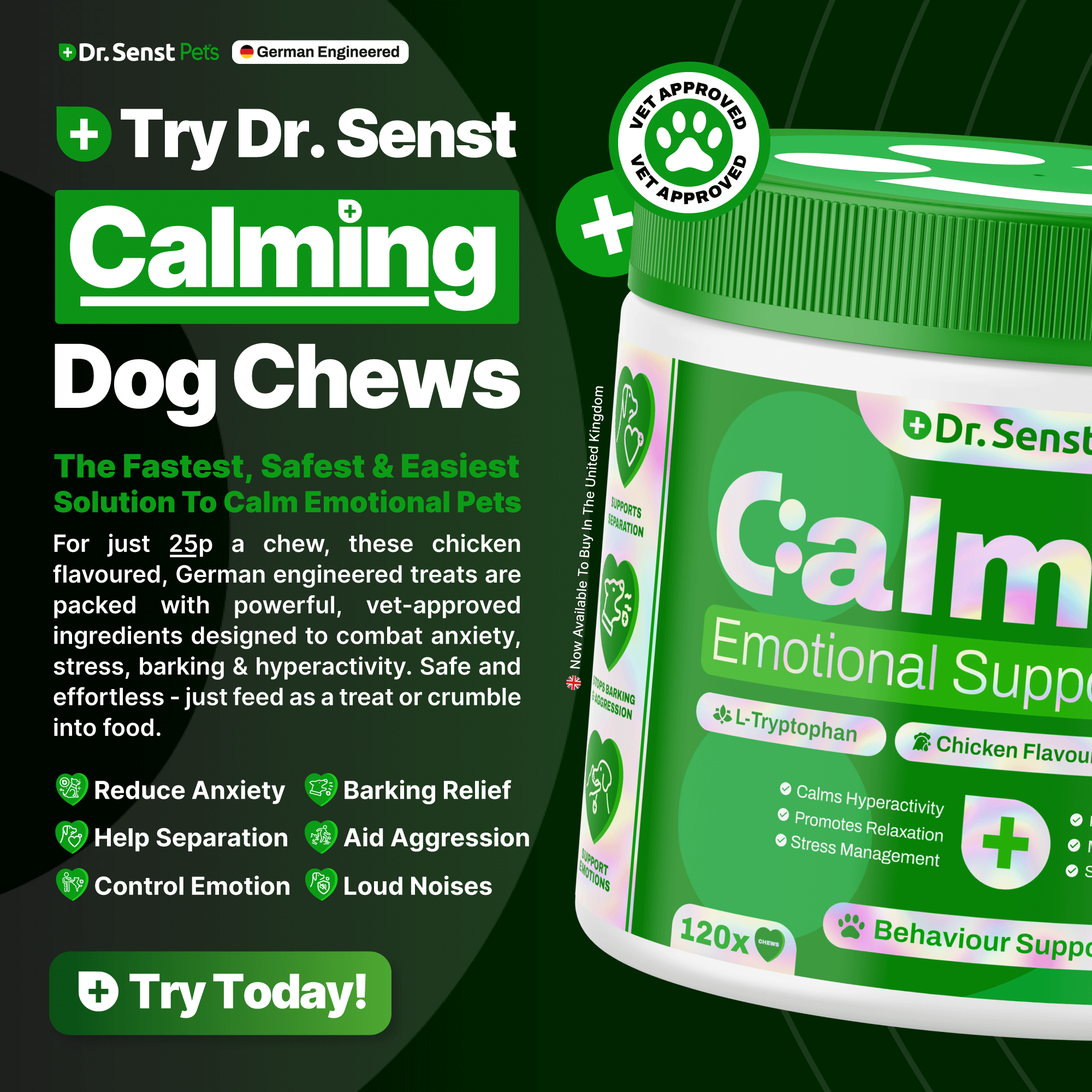
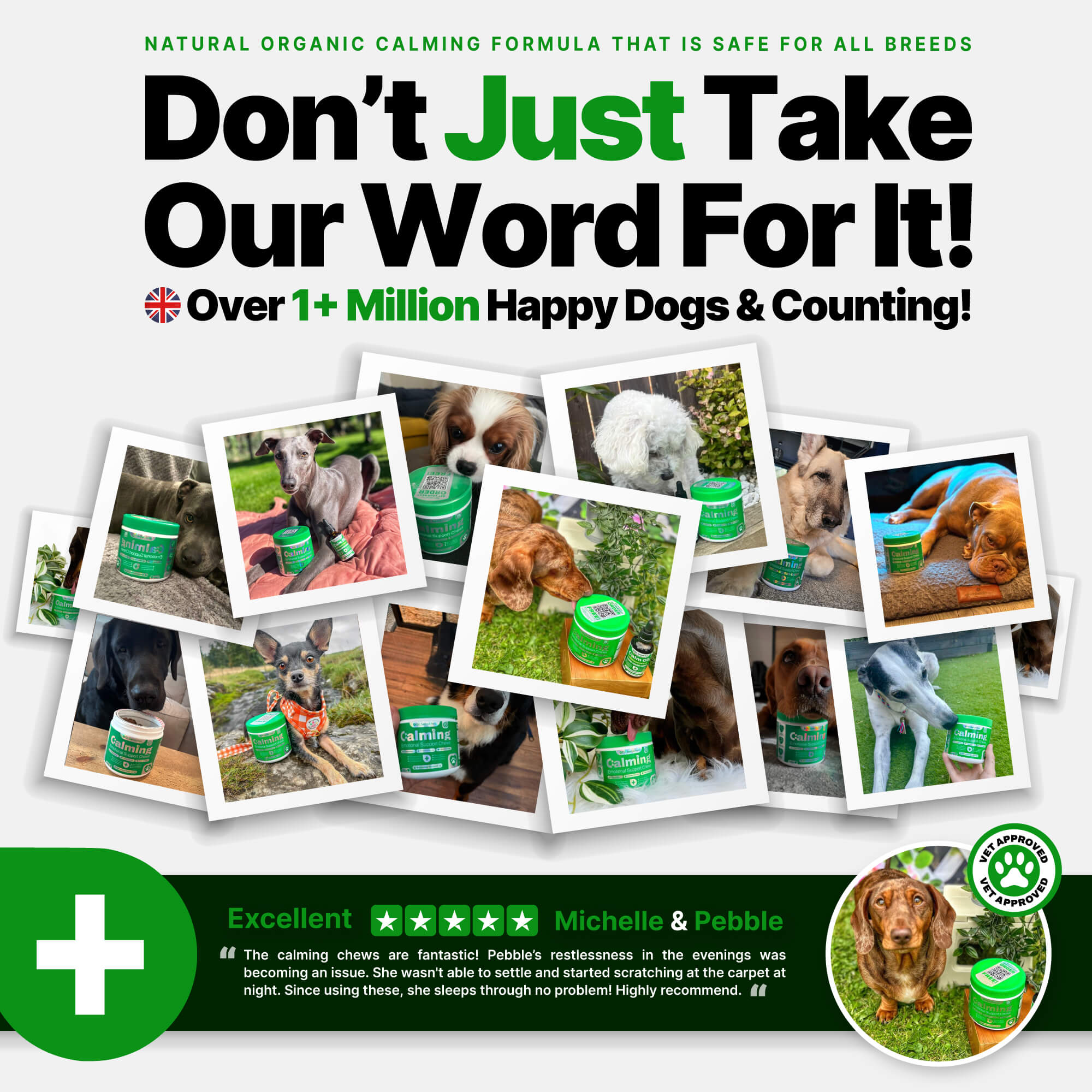


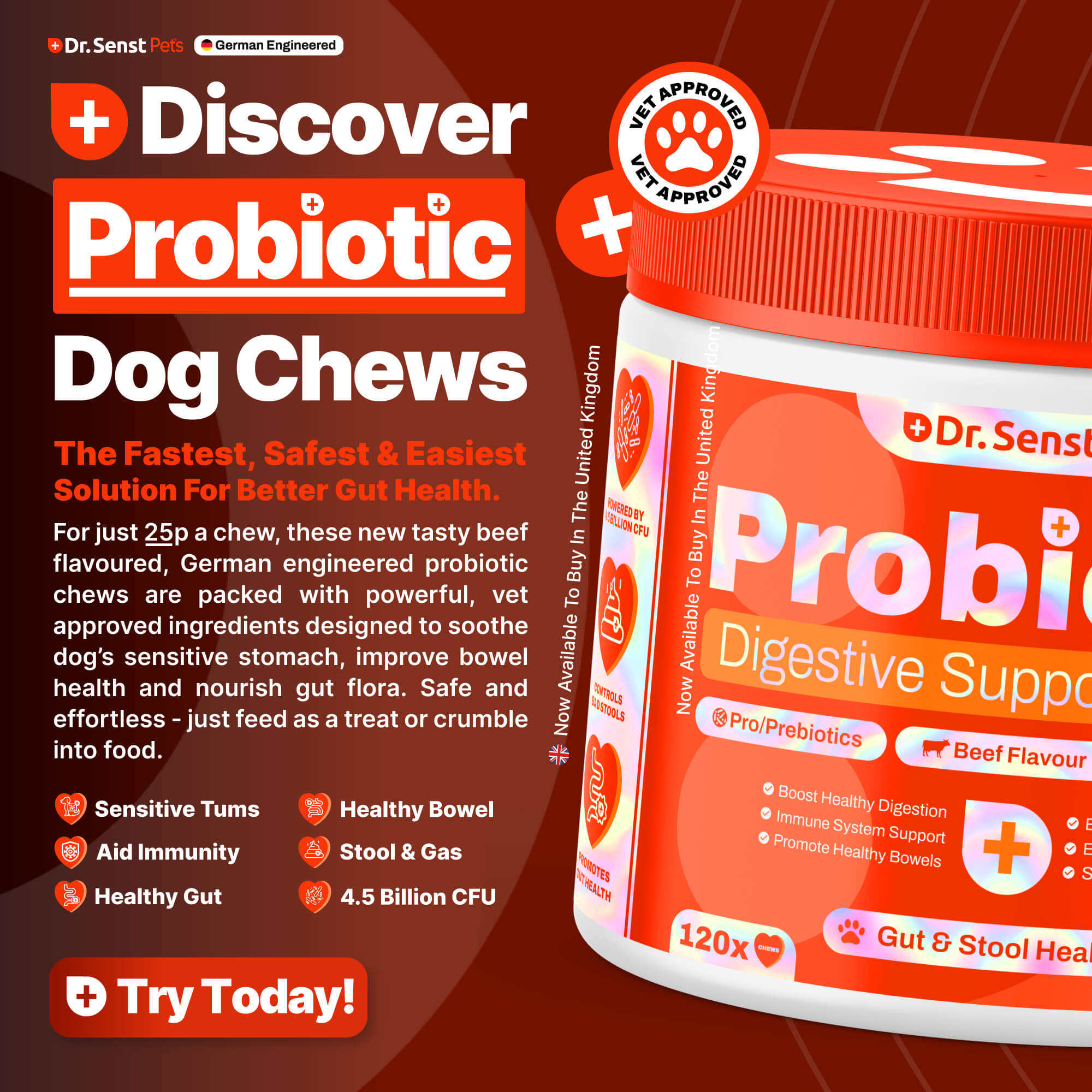
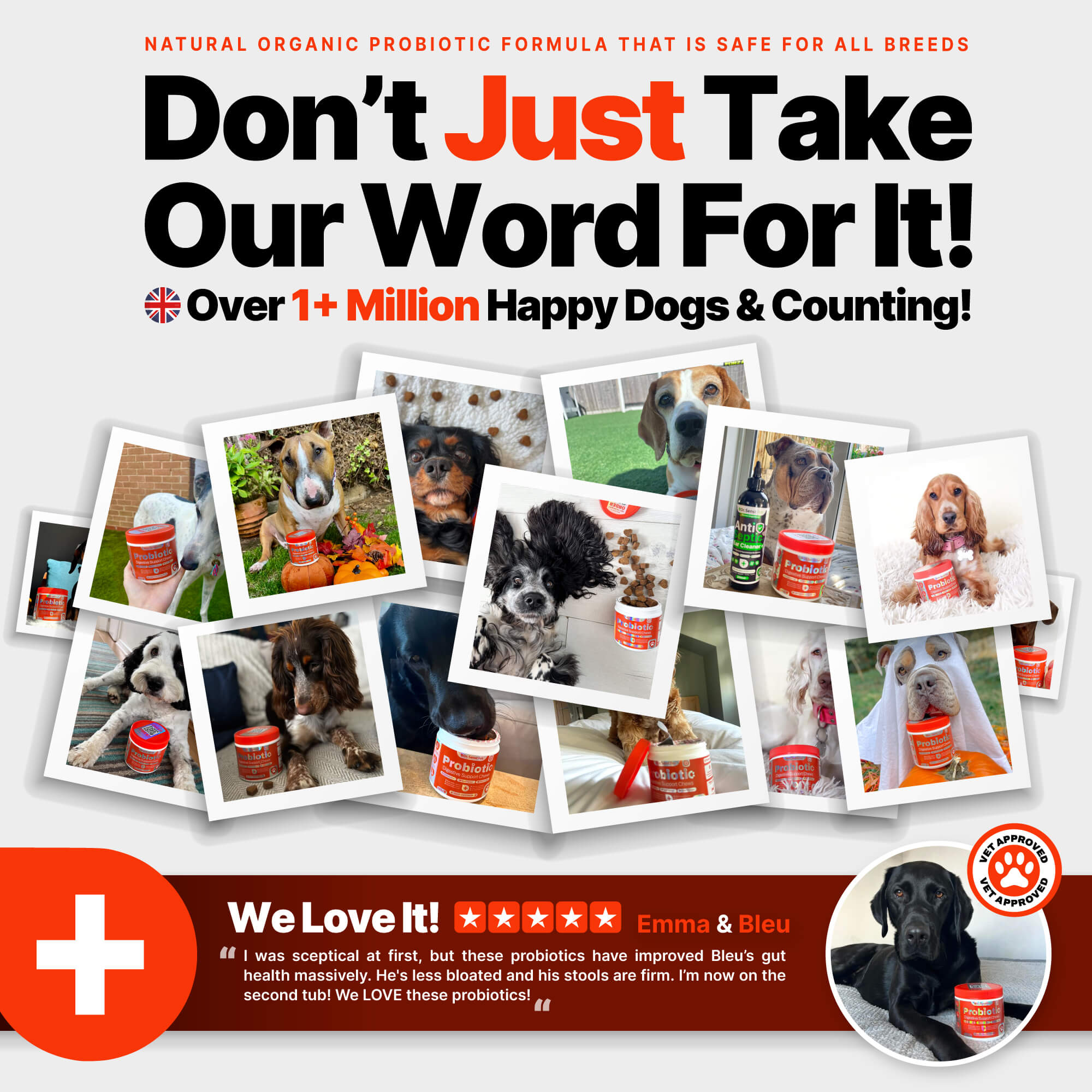








Share:
Stress-Free Adventures: How to Travel Comfortably with Your Dog
From Stress to Mess: Understanding Cat Anxiety and Litter Box Issues